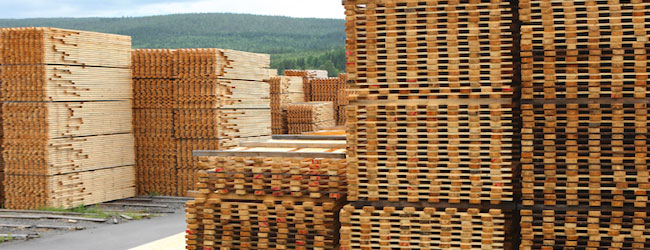
Features
First Cut: Investing in success
As lumber markets improve, investing in the future remains key
September 18, 2020 By Ellen Cools

If there’s one thing everyone can agree on, it’s that 2020 has been nothing like what we expected. At the start of the year, our industry was excited to leave 2019 behind, after all of the terrible news of sawmill curtailments and weak lumber prices. In CFI’s January/February 2020 issue, Russ Taylor, managing director for FEA-Canada, shared the 2020 lumber markets outlook, predicting an increase in lumber price of about 10 per cent over 2019 levels.
No one could have predicted that COVID-19 would become a worldwide pandemic and result in even more sawmills taking downtime or shutting down permanently. But once it hit, market analysts began predicting that after a sharp drop in mid-2020, the global softwood lumber market would see a comeback. And, so far, it looks like those predictions were correct.
Softwood lumber prices have been on the rise in Canada and the U.S. since the beginning of May, when prices surpassed May 2019 levels, according to Madison’s Lumber Reporter, who shares their weekly lumber prices report on CFI’s website, www.woodbusiness.ca. A spike in demand combined with low supply has boosted prices even higher this summer, a positive sign for the industry after weathering the storm last year and this spring.
This lines up with what experts shared during the 2020 Global Softwood Lumber and Log Conference, which took place virtually on June 18. Read Russ Taylor’s summary of the conference here. Speakers at the conference predicted a correction in July – as we have now seen – although future waves of the virus could cause similar shocks to demand, labour availability, shipping logistics and price volatility as in March and April. But weathering the ups and downs of the industry is something that we are all accustomed to. Doing so successfully requires innovation, investment and, perhaps most importantly, commitment.
Millar Western Forest Products is a prime example of this. The company celebrated its 100-year anniversary last year, a major milestone for any forest products company. But they are already looking ahead to the next century, investing $36 million to upgrade their operations and stay on top of their game. Above all else, however, Millar Western credits their success to their employees, many of whom have worked for the company for more than 40 years. “Our people truly are the greatest resource we have,” Tom Thompson, the company’s general manager of wood products, told me. You can read more here.
Support from people and the local community also play a key role in two B.C. community forests’ success. Powell River Community Forest and the Tla’amin community forest are giving back to their communities, providing funding for local projects, while also employing members of the community and changing public opinion about forestry. Read more about their experiences here.
This commitment to the industry and the community has really impressed me over the past year. Speaking to Tiara Seitz, owner of Woodrow Trucking, back in April, I was struck by her passion for forestry. Despite the difficulties she has faced in the past year-and-a-half, she says she loves what she does and wouldn’t change a thing. Read more about her experience as a female log hauler here.
As we move into the second half of 2020, I know this commitment and passion will continue to move our industry forward in a positive direction. We can only hope that we continue to see positive signs in the markets and in Canada’s fight against COVID-19.
Print this page